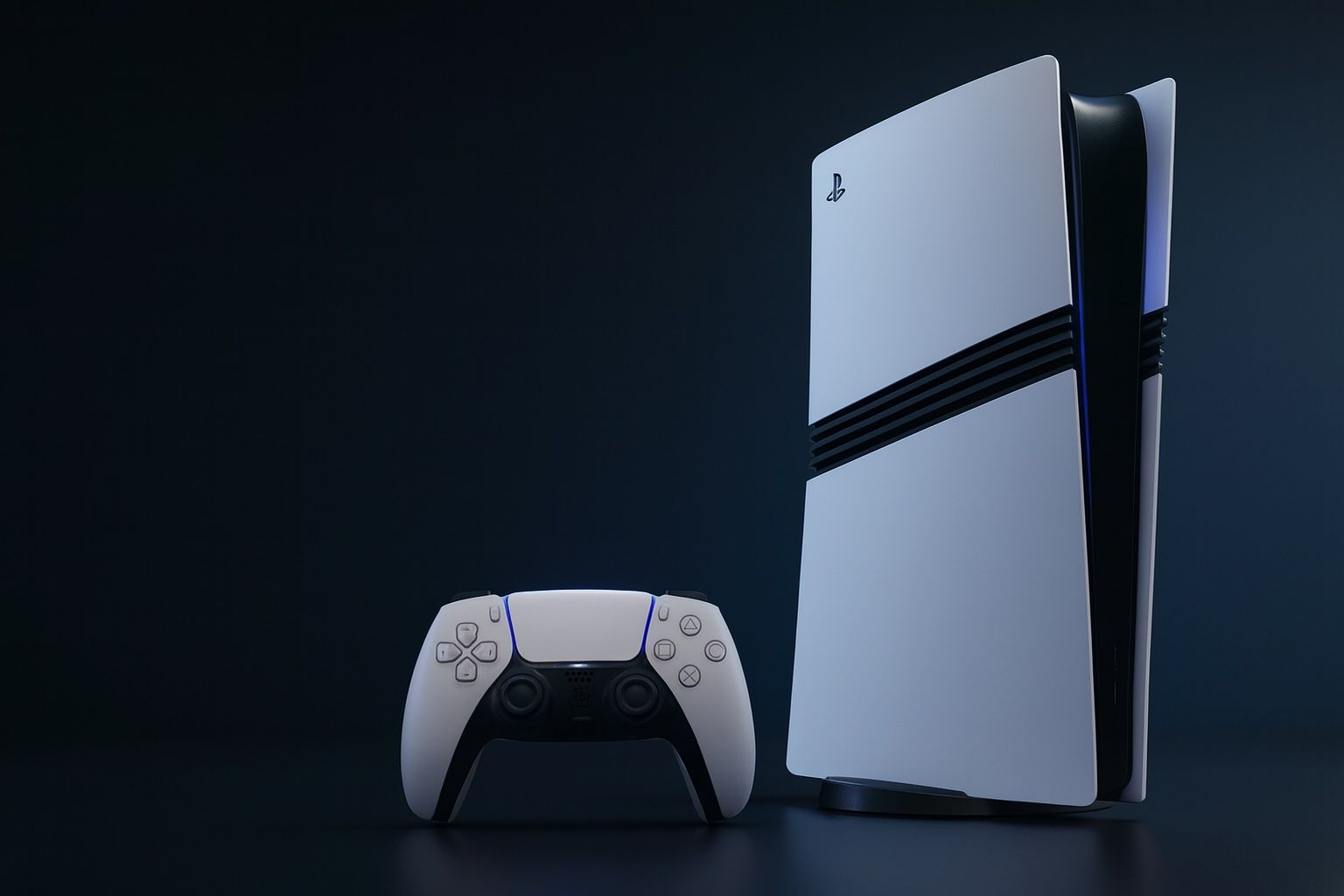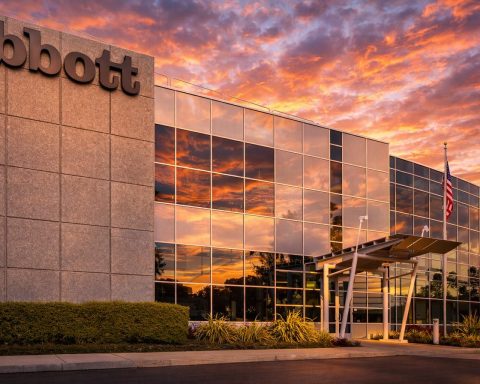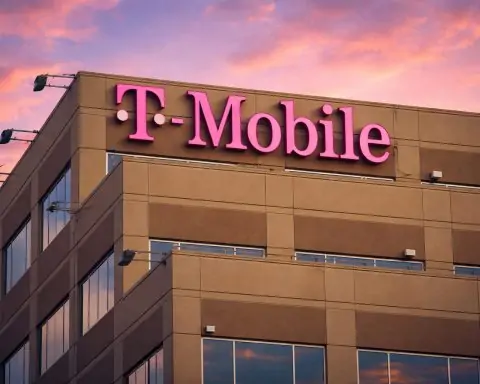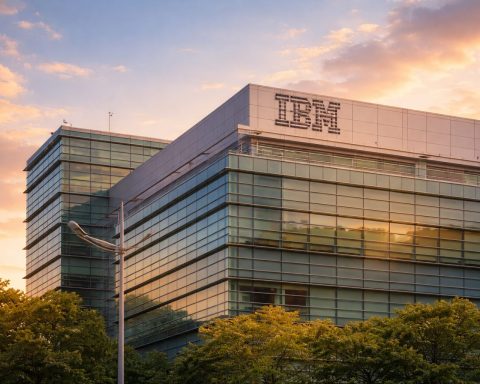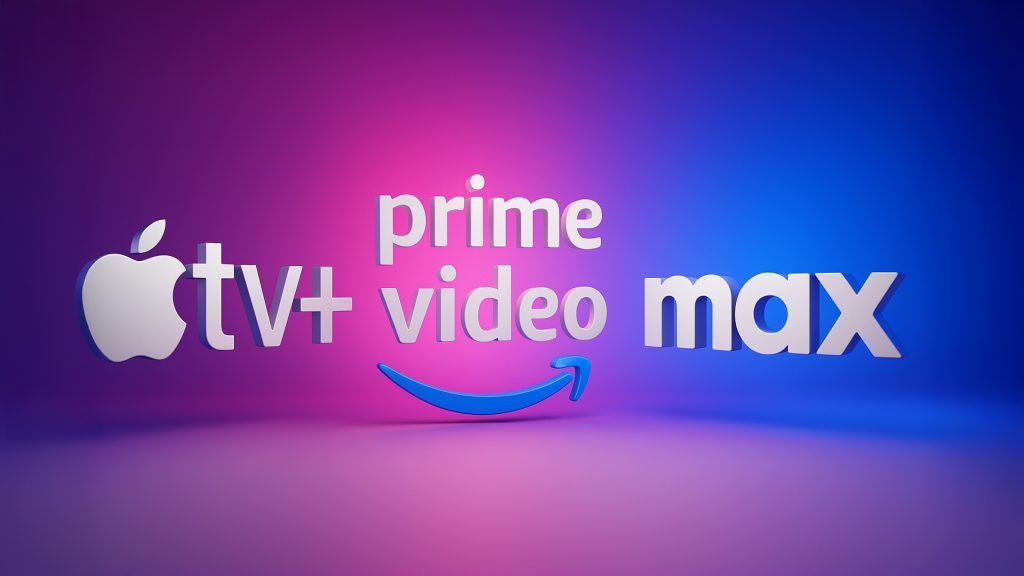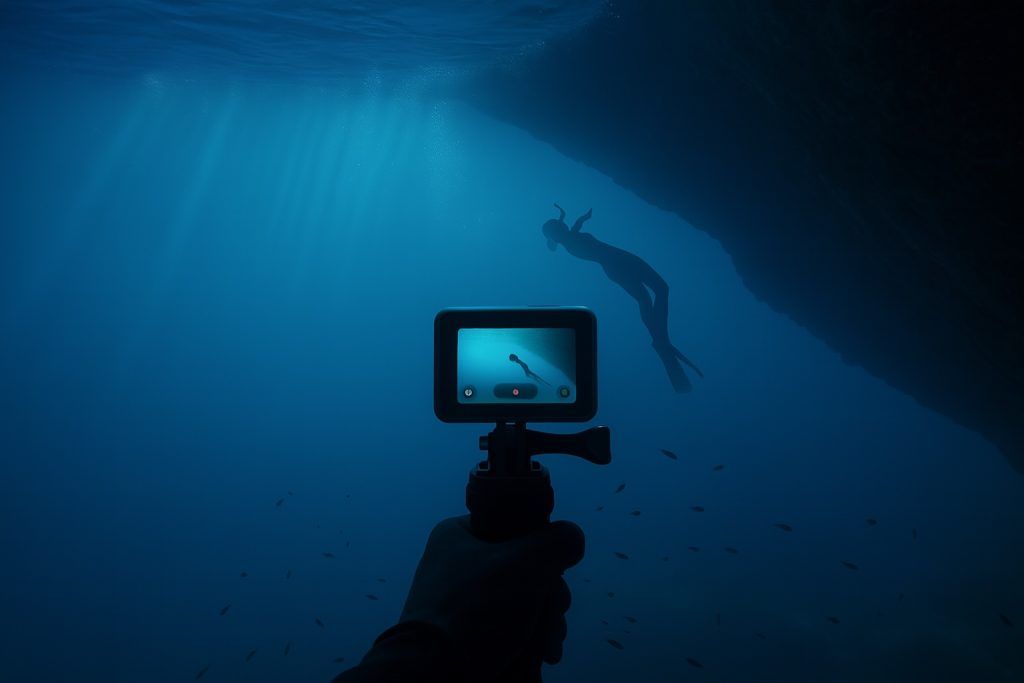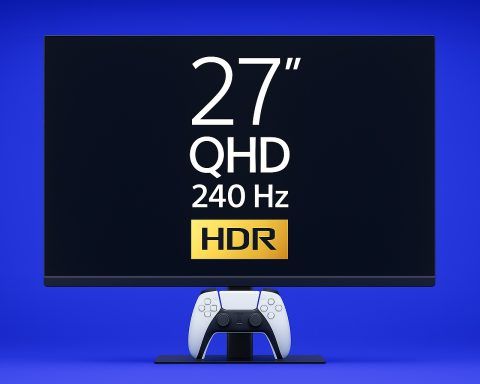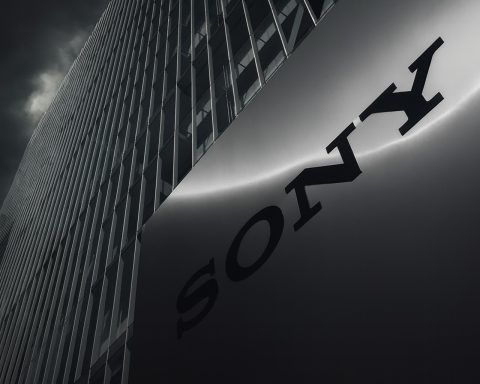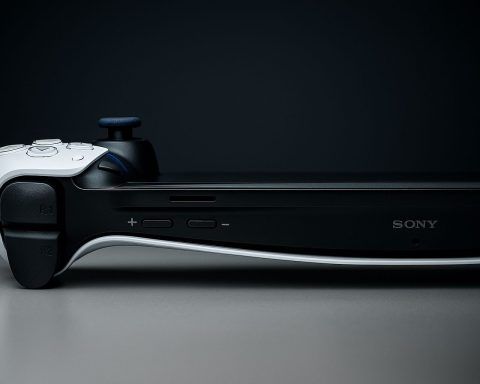- The PS5 Pro, released in November 2024, features 60 compute units at 2.35 GHz for about 16.7 TFLOPs and a +28% memory bandwidth boost.
- Both PS5 models use an AMD Zen 2 8-core CPU up to 3.5 GHz and 16 GB GDDR6 RAM, with a base 825 GB NVMe SSD on PS5 and a 2 TB SSD on PS5 Pro.
- The Xbox Series X uses an AMD Zen 2 8-core CPU at 3.8 GHz (3.6 GHz SMT), a RDNA2 GPU with 52 CUs at 1.825 GHz (about 12.15 TFLOPs), and a 1 TB NVMe SSD.
- A 2024 refresh for Xbox Series X added a 6nm chip and Wi‑Fi 6E, with later price adjustments to around $599.
- Nintendo Switch OLED (2021) features a 7-inch 720p OLED handheld screen, ~4 GB of RAM, and 128 GB storage expandable via microSD.
- Nintendo Switch 2 (July 2025) advances to a 7.9-inch 1080p LCD with VRR, 120 Hz, 256 GB storage, 4K@60 docking, and is backward compatible with nearly all Switch games.
- TechRadar notes PS5 Pro is the most powerful console, with Xbox Series X slightly less powerful, while Switch OLED lags by design due to 1080p limitations.
- PS5 and Xbox offer large game libraries with major exclusives for PS5 (e.g., God of War Ragnarök, Spider-Man 2, Horizon Forbidden West) and the breadth of Game Pass for Xbox.
- Backward-compatibility is strongest on Xbox Series X (virtually all Xbox One titles plus hundreds of Xbox 360/original Xbox games), while PS5 plays almost all PS4 titles and Switch plays only Switch games via Switch Online retro content.
- By 2025, price points include PS5 around $550 and PS5 Pro at $699, Xbox Series X around $599, Switch 2 at $449 (or $499 with bundles), Switch OLED at $349, with Series S at $299 and PS5 Digital at $399 as cheaper options.
As of late 2025, the gaming console landscape is dominated by Sony’s PlayStation 5, Microsoft’s Xbox Series X, and Nintendo’s Switch OLED – each with distinct strengths. Sony even launched a mid-cycle PS5 Pro (Nov 2024) with a faster GPU and AI upscaling [1], while Nintendo unveiled the Switch 2 (July 2025) as a more powerful successor [2] [3]. Microsoft’s lineup saw a hardware revision: a white, all-digital Series X model (1TB) in 2024 [4]. This report deeply compares hardware specs, performance, game libraries, exclusives, controllers, UIs, services, multimedia, backward compatibility, pricing, ecosystem features, and portability. We draw on official specs and expert analyses (TechRadar, Tom’s Guide, etc.) to guide casual gamers, parents, and enthusiasts alike.
Hardware Specifications & Performance
PS5/PS5 Pro: Both PS5 models use an AMD Zen 2 8-core CPU (up to 3.5 GHz) and 16 GB GDDR6 RAM [5]. The original PS5’s GPU is AMD RDNA2 with 36 Compute Units at 2.23 GHz (≈10.3 TFLOPs) [6], capable of 4K/120fps with ray tracing [7] [8]. The PS5 Pro boosts the GPU to 60 CUs at 2.35 GHz (≈16.7 TFLOPs actual) [9] [10] and raises memory bandwidth +28%. Sony claims ~45% faster rendering [11]. Both PS5 versions use a custom NVMe SSD (825 GB base, Pro 2 TB) for blazing load times [12] [13].
Xbox Series X: Microsoft’s flagship has an AMD 8-core Zen 2 CPU at 3.8 GHz (3.6 GHz SMT) and 16 GB GDDR6 RAM [14]. Its GPU is custom RDNA2 with 52 CUs at 1.825 GHz (~12.15 TFLOPs) [15]. This allows true 4K gaming up to 120 fps, HDR, and hardware ray tracing. The Series X includes a 1 TB NVMe SSD (now 2 TB special editions) [16]. A recent 2024 revision added a 6nm chip for efficiency and Wi-Fi 6E [17]. Notably, Microsoft’s ecosystem means games and saves carry across Xbox consoles and even PC.
Nintendo Switch OLED: The Switch family uses an NVIDIA Tegra ARM SoC (Maxwell GPU) with roughly 4 GB RAM. The OLED model (2021) has a 7″ 720p OLED screen (for handheld) and outputs 1080p TV [18] [19]. Its 128 GB storage (vs 32 GB original) is expandable via microSD. Performance is far below PlayStation/Xbox: most games run at 30 fps, 720p/1080p at best [20]. However, Switch 2 (2025) leaps ahead: it sports a 7.9″ 1920×1080 LCD (up from 720p) with VRR and 120 Hz support [21], plus a new dock unlocking up to 4K@60fps output [22]. The Switch 2’s “NVIDIA custom” CPU/GPU and 256 GB storage make it akin to a mid-gen console [23] [24].
In benchmarks, PS5 Pro leads in raw power: it is “easily the most powerful console” with the highest TFLOPs [25]. TechRadar notes PS5 Slim (standard PS5) still delivers “unbeatable all-round” performance [26]. The Xbox Series X is slightly less powerful than PS5 Pro but still a 4K powerhouse [27]. The Switch OLED lags by design – it cannot do true 4K and is limited to 1080p docked. However, Nintendo’s focus on efficiency lets it play many games smoothly without fan noise. In practice, shooters and AAA games look and run best on PS5/Xbox, while Switch shines in Nintendo’s stylized titles.
Game Libraries & Exclusives
Each console offers thousands of games, but their libraries differ in mix:
- PlayStation 5 has a vast library including all PS4 titles (backward compatible) and strong multi-platform support. Its standout exclusives include God of War Ragnarök, Horizon Forbidden West, Marvel’s Spider-Man 2, The Last of Us Part I/II, Ratchet & Clank: Rift Apart, Gran Turismo 7, etc. [28] [29]. Sony’s first-party lineup (“Ratchet & Clank, God of War, Horizon, TLOU, Spider-Man, Demon’s Souls, Gran Turismo” [30]) frequently tops year-end “Best Game” lists. PS5 also has VR2-exclusive titles (e.g. Astro’s Playroom VR2).
- Xbox Series X emphasizes breadth through Game Pass rather than exclusive blockbuster “system sellers.” Its own franchises (Halo Infinite, Forza Horizon, Gears of War, Ori and the Will of the Wisps) exist, and 2023 brought Starfield (Bethesda) and Forza Motorsport. Upcoming games include Fable, Avowed, State of Decay 3, etc. However, Tom’s Guide notes none of Microsoft’s big new exclusives had launched by 2025 [31], relying instead on cross-platform and PC releases. A major selling point is backward compatibility: “almost all Xbox One titles and many Xbox 360/Original Xbox games” run on Series X [32].
- Nintendo Switch OLED has a focused lineup of family-friendly and nostalgic titles. Its marquee exclusives – The Legend of Zelda: Breath of the Wild and Tears of the Kingdom, Super Mario Odyssey, Animal Crossing: New Horizons, Pokémon Scarlet/Violet, Splatoon 3, Mario Kart 8 Deluxe, etc. – define generations. Switch draws on Nintendo’s iconic franchises, plus many indie hits. Tom’s Guide praises Switch for its “absolutely incredible games” including best-of-the-decade Zelda and Mario Odyssey [33]. The library skews younger and more casual-friendly, making it a hit with families. Notably, Switch 2 will play all Switch games plus new exclusives (e.g. Mario Kart World, Pokémon Legends: Z-A); its launch bundles indicate faith in Nintendo’s IP [34].
In summary, casual/family gamers may favor Switch (Nintendo games, couch co-op, portability) [35] [36]. Enthusiasts seeking cutting-edge action and graphics lean PS5 or Xbox (higher-res gaming, fast load times). Backwards-compatibility buffs gravitate to Xbox (broad legacy support) and PS5 (PS4 library).
Controllers & Accessories
- PlayStation 5: The DualSense controller is a highlight – its adaptive triggers and nuanced haptic feedback add immersion (footsteps, engine sounds, trigger resistance) [37]. Sony also offers the premium DualSense Edge (remappable buttons). PS5 supports PlayStation VR2 with new Sense controllers, and the optional PlayStation Portal handheld (streaming PS5 games over Wi-Fi). Recent firmware even lets users customize the UI look with “classic PlayStation” themes [38].
- Xbox Series X: The standard Xbox Wireless Controller (Series) has refinements: textured grips, a hybrid D-pad, and a dedicated Share button [39]. Microsoft sells the Elite Series 2 controller (swappable parts, adjustable tension). Leaks suggest a new “Sebile” controller with haptic actuation and modular thumbsticks (per FTC documents) [40]. All Xbox One accessories (headsets, controllers) are compatible with Series X [41]. Notably, Xbox controllers pair easily with Windows and even Android.
- Nintendo Switch OLED: Comes with detachable Joy-Con: tiny controllers with motion sensors, HD Rumble, and an infrared camera (in left Joy-Con) for special games. A more ergonomic Pro Controller is also available. For Switch 2, Nintendo unveiled new “Joy-Con 2” that attach via magnets and include an optical sensor so the Joy-Con itself can act like a PC mouse on surfaces [42]. Switch 2’s Joy-Con 2 also add a dedicated “C” button for GameChat. Both consoles support touch (capacitive screen on Switch) and simple button schemes. Overall, Switch controllers emphasize versatility (handheld/TV mode) and multiplayer (each Joy-Con is a full controller).
User Interface & Experience
- PS5 UI: Sony’s dashboard is visually dynamic, with “Control Center” overlays and Activity Cards that show in-game goals. The April 2025 update added an “Audio Focus” accessibility feature and re-enabled retro console skins [43]. Users praise the crisp, responsive interface, though Tom’s Guide notes it can feel “old-school” (no native cloud app store, fewer multimedia apps) [44]. The PS5 is largely tethered to your main TV, though remote-play (via PS Portal or mobile) is improving.
- Xbox UI: The Series X dashboard (shared with Series S/One) is organized into Home (game/carousel tiles) and a Guide menu (social, settings, Game Pass library). Microsoft’s UI highlights Game Pass (since it’s a core feature) and Xbox Live social features. It’s similar to Windows 10/11 style, with fast resume and background updates. Recent console design changes (like the new white Series X) don’t affect the UI, but “Quick Resume” and cloud saves give a smooth multi-session experience. The Xbox ecosystem also connects seamlessly to PC via Xbox app, with cloud gaming on mobile (Game Pass Ultimate).
- Switch UI: By contrast, the Switch’s home screen is very simple: a row of game icons and news banners. There’s no virtual console store on the console itself (retro games come via the Switch Online service) and few gimmicks. The focus is on quickly launching games or accessing System Settings. For families, the Switch UI’s simplicity is a plus (kids can easily navigate). However, Nintendo’s ecosystem is more standalone: the Switch Online smartphone app is needed for voice chat (added for Switch 2’s GameChat feature [45]), which some parents find cumbersome.
Online Services & Ecosystems
- PlayStation Network (PSN): Free to join, PSN enables multiplayer (with PS Plus subscription) and friends lists. In 2022 Sony rebranded PS Plus into tiers: Essentials (online + free monthly games), Extra (adds a catalog of PS4/PS5 games), and Premium (adds game trials, classics streaming). PSN supports cloud saves and cross-buy for some titles. Unlike Xbox, PS Now cloud streaming is confined to the Premium tier. Sony’s ecosystem also includes the PlayStation App for mobile, and integration with PlayStation 5’s remote play features.
- Xbox Live & Game Pass: Xbox Live Gold is bundled into Game Pass Ultimate. Game Pass is a cornerstone: for ~$15/month, players get hundreds of games (console, PC, and cloud) from day one [46]. The “Xbox ecosystem” is tightly integrated: you can switch play between console, PC, and mobile via cloud, with unified progress. Xbox Series X shines with these services – Tom’s Guide calls Game Pass its “biggest advantage” [47]. Xbox also promotes cross-platform play (e.g. in Fortnite, Call of Duty) and social features (Xbox Live parties).
- Nintendo Switch Online: Nintendo requires a paid subscription (~$20/year) for online play on Switch. The service provides cloud save backup and a library of retro games (NES/SNES, and N64/Genesis via Expansion Pack). Nintendo’s ecosystem is relatively walled: no PC integration, and major streaming or multimedia apps are lacking (Nintendo doesn’t offer Netflix on Switch). The new Switch 2 introduces “GameChat” – a built-in voice chat (via a “C” button) with echo cancellation [48], plus video chat if you attach a USB-C camera. For parents, Nintendo maintains friend codes and strong parental controls [49]. Overall, Switch Online is simpler and less expansive than PSN or Xbox Live, but sufficient for Nintendo’s audience.
Multimedia & Backward Compatibility
- Multimedia: Both PS5 and Series X double as home media centers. They include 4K Ultra HD Blu-ray drives (disc editions) and support streaming apps (Netflix, Disney+, Amazon Prime, YouTube, etc.) with HDR. The PS5’s audio hardware (Tempest 3D Engine) and high-end HDMI 2.1 support make it a strong AV hub. In contrast, the Switch OLED has no disc drive and minimal streaming app support. It is purely a gaming device; any video (Netflix/Hulu) is absent on Nintendo platforms. Switch 2 likewise focuses on games, though its built-in speakers and mic facilitate GameChat.
- Backward Compatibility: Sony and Microsoft champion backward play, while Nintendo takes a different approach. PS5 runs almost all PS4 games natively [50] (many getting free “PS5 upgrades”), and supports PS VR2. However, it cannot play PS1/PS2/PS3 discs; older classics only come via remasters or streaming (PS Plus Premium’s classic games). Xbox Series X offers the “most robust” backward compatibility [51]: virtually all Xbox One games work, plus hundreds of Xbox 360 and original Xbox titles (often enhanced). Series X can even use old accessories (headsets, controllers [52]). Switch OLED plays only its own library; it cannot play Wii U/DS games. Retro content comes via Switch Online subscriptions (NES/SNES/N64/GBA), but no native backward slots. In practice, Xbox wins for legacy gamers, PS5 for recent-gen fans, and Switch for its own virtual-console offerings.
Price & Value
At launch, base prices were PS5 $499/$399 (disc/digital) and Series X $499, Switch OLED $349 [53]. But by 2025, all three saw price hikes. Sony raised PS5 to ~$550 and PS5 Pro to $699 (Jul 2024) [54], and rumors say ~$750 by late 2025 [55]. Microsoft quietly pushed its white 1TB digital Series X to $549 [56] and later bumped the standard Series X to $599 [57]. Nintendo surprised by keeping Switch 2 at $449 at launch [58], but raising the OLED to ~$400 [59].
Ultimately value depends on needs: TechRadar deems PS5 Slim (standard PS5) the best “all-round” pick in 2025 [60], while PS5 Pro is “the most powerful console” for enthusiasts [61]. Xbox Series X offers great performance and Game Pass bang-for-buck, but is now the priciest Xbox. The Switch line still undercuts them in entry cost (Switch 2 at $449). As ComicBook notes, the original Switch (non-OLED) is the cheapest at ~$340 [62], but with dated hardware. Buyers on a budget might opt for Xbox Series S ($299) or PS5 Digital ($399) as cheaper alternatives (these still play the same games, minus disc).
Portability & Design
Only Nintendo offers true portability: the Switch is a hybrid console. Switch OLED (and Lite) can be played handheld anywhere, then docked to TV – a “revolutionary” convenience for families [63]. In handheld mode, its battery (about 3–6 hours) powers games on the go. PlayStation 5 and Xbox Series X are bulky living-room boxes: neither is designed for travel. Sony’s dual-screen remote (PlayStation Portal) can stream games to a small handheld device, but only over Wi-Fi and with visual lag. In design, the PS5 Slim (2023) trimmed the original PS5’s odd angles, and Xbox’s new cylinder-like Series X (all-digital) aims for easier integration [64]. Both are heavier and larger than the Switch (Switch OLED ~420g; PS5 ~4.5kg).
For parents and casual settings, Switch’s compact, kid-proof design wins points. Controllers can split into four Joy-Con for instant multiplayer. The screen’s colorful OLED is kid-friendly. PS5/Xbox require separate headsets for voice, and usually a dedicated TV. In sum, portability and pick-up-play go to Nintendo; raw power and home-theater integration go to Sony and Microsoft.
Mid-Generation Upgrades & Future Models
By late 2025, several upgrades have reshaped the generation:
- PS5 Pro (Nov 2024): Sony’s pro model introduced a major spec bump. It has 30 WGPs (versus 18 on base PS5), hybrid RDNA2/3 GPU, and 16.7 TFLOPs [65]. PS5 Pro games offer higher fidelity modes (ray tracing at higher frame rates) thanks to faster memory and Sony’s new PlayStation Spectral Super Resolution AI upscaling [66]. Early titles like Spider-Man 2, Horizon Forbidden West (Pro Mode), and Final Fantasy VII Rebirth got free PS5 Pro enhancements. Its launch price was $699.99 [67] (with 2 TB SSD and DualSense). TechRadar observes that PS5 Pro is “the most powerful console” on the market [68]. The PS5 Slim edition (2023) remains available and more affordable, but without Pro’s power.
- Xbox Refreshes (2024–2025): Microsoft’s stealth update (codenamed Brooklin) brought a white, all-digital Series X with 1 TB SSD in 2024 [69]. Internally it’s mostly the same, but with a smaller 6nm chip and Wi-Fi6E [70]. Later, Microsoft raised the Series X price to ~$599 [71]. There is no official “Series X Pro” yet; rumors suggest the next true Xbox (codename Arches or a 2027 launch) may blend console and PC features. Meanwhile, Xbox Series S got a 1 TB SKUs (for $379 [72]) and shares new controllers across the family. Xbox’s focus appears more on cloud gaming (Xbox Cloud) than hardware refreshes.
- Nintendo Switch 2 (July 2025): Nintendo finally released a successor. The Switch 2 keeps the hybrid form factor but jumps in power. Its key specs (7.9″ 1080p screen, 4K docking, USB-C charge port on top) and new Joy-Con 2 are listed in Nintendo’s press [73] [74]. Importantly, Switch 2 is backward compatible with nearly all Switch games [75]. Nintendo’s pitch: “All Together, Anytime, Anywhere” – multiplayer GameChat and high frame rates in handheld mode [76] [77]. At launch, Switch 2 costs $449.99 (console only) [78], $499.99 with popular game bundles (e.g. with Mario Kart World). Early reviews (TechRadar) called it “the ultimate Nintendo Switch” [79] with “dramatically improved specs.” For Switch owners, this marks the transition to a new generation; for new buyers, Switch 2 is now the more future-proof Nintendo device.
In summary, all three platforms have their continuations: Sony will likely keep iterating (PS5 Pro is generation’s peak), Microsoft may pivot to cloud or a handheld console (Project Alea, rumored for Oct 2025) instead of a mid-gen box, and Nintendo has switched its focus to Switch 2. For 2025 buyers, it’s worth considering these developments: PS5 and Xbox are close in power, but Switch’s new generation bridges the gap somewhat.
Conclusion: Which Console Is Right for You?
In the battle of 2025 consoles, there is no one-size-fits-all answer. TechRadar’s hardware testing labels PS5 Slim/Pro the “best overall” choices and outright most powerful [80] [81]. PS5 appeals to hardcore gamers seeking cutting-edge graphics, a strong exclusive lineup, and fast SSD loading. Xbox Series X shines with its ecosystem: Game Pass makes a huge library available cheaply, and backward compatibility is unmatched [82]. It’s the pick for those who also game on PC or want instant-play cloud streaming. Meanwhile, Nintendo Switch OLED (and Switch 2) triumph in portability and family appeal: beloved franchises and the unique handheld/tabletop experience [83] [84].
For casual gamers and parents, the Switch is a clear favorite: its ease of use, kid-friendly games, and hybrid playmode are hard to beat [85] [86]. For enthusiasts and technical users, PS5 Pro or Series X offer the most horsepower and high-resolution multimedia. Those worried about budget or value might prefer Xbox Game Pass or Nintendo’s lower upfront cost (Switch). In any case, the console generation now offers choices catering to every style: Sony for exclusive epics, Microsoft for subscription breadth, and Nintendo for innovative portability.
Sources: Authoritative console specs and announcements [87] [88] [89] [90] [91], expert comparisons and analysis [92] [93] [94], and official press/tech media reviews [95] [96] were used to compile this report.
References
1. sonyinteractive.com, 2. www.nintendo.com, 3. www.nintendo.com, 4. www.microsoft.com, 5. en.wikipedia.org, 6. en.wikipedia.org, 7. en.wikipedia.org, 8. en.wikipedia.org, 9. www.tweaktown.com, 10. sonyinteractive.com, 11. sonyinteractive.com, 12. en.wikipedia.org, 13. sonyinteractive.com, 14. www.xbox.com, 15. www.xbox.com, 16. en.wikipedia.org, 17. www.theverge.com, 18. www.tomsguide.com, 19. www.tomsguide.com, 20. www.tomsguide.com, 21. www.nintendo.com, 22. www.nintendo.com, 23. www.nintendo.com, 24. www.nintendo.com, 25. www.techradar.com, 26. www.techradar.com, 27. www.techradar.com, 28. www.tomsguide.com, 29. www.tomsguide.com, 30. www.tomsguide.com, 31. www.tomsguide.com, 32. www.tomsguide.com, 33. www.tomsguide.com, 34. www.nintendo.com, 35. www.tomsguide.com, 36. www.tomsguide.com, 37. www.tomsguide.com, 38. blog.playstation.com, 39. www.xbox.com, 40. www.theverge.com, 41. www.xbox.com, 42. www.nintendo.com, 43. blog.playstation.com, 44. www.tomsguide.com, 45. www.nintendo.com, 46. www.tomsguide.com, 47. www.tomsguide.com, 48. www.nintendo.com, 49. www.nintendo.com, 50. www.tomsguide.com, 51. www.tomsguide.com, 52. www.xbox.com, 53. www.tomsguide.com, 54. sonyinteractive.com, 55. comicbook.com, 56. www.microsoft.com, 57. comicbook.com, 58. www.nintendo.com, 59. comicbook.com, 60. www.techradar.com, 61. www.techradar.com, 62. comicbook.com, 63. www.tomsguide.com, 64. www.theverge.com, 65. www.tweaktown.com, 66. sonyinteractive.com, 67. sonyinteractive.com, 68. www.techradar.com, 69. www.microsoft.com, 70. www.theverge.com, 71. comicbook.com, 72. comicbook.com, 73. www.nintendo.com, 74. www.nintendo.com, 75. www.nintendo.com, 76. www.nintendo.com, 77. www.nintendo.com, 78. www.nintendo.com, 79. www.techradar.com, 80. www.techradar.com, 81. www.techradar.com, 82. www.tomsguide.com, 83. www.tomsguide.com, 84. www.tomsguide.com, 85. www.tomsguide.com, 86. www.tomsguide.com, 87. en.wikipedia.org, 88. www.xbox.com, 89. www.nintendo.com, 90. www.nintendo.com, 91. sonyinteractive.com, 92. www.tomsguide.com, 93. www.tomsguide.com, 94. www.techradar.com, 95. www.tweaktown.com, 96. sonyinteractive.com
